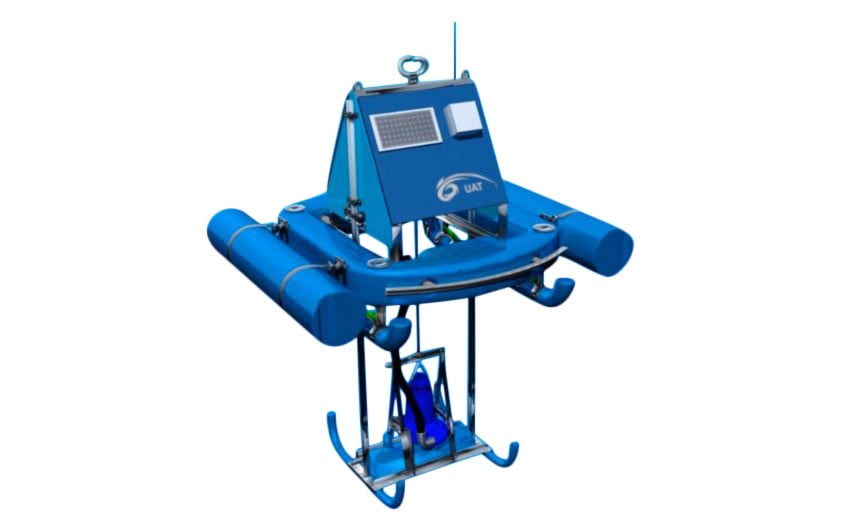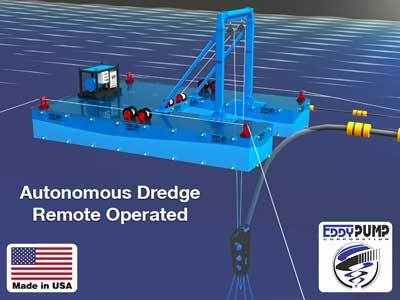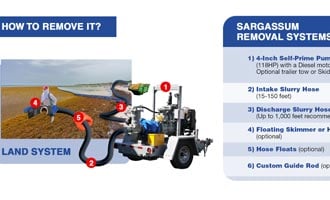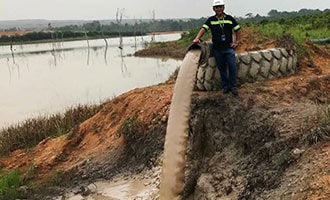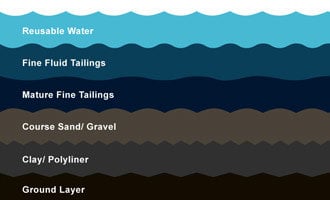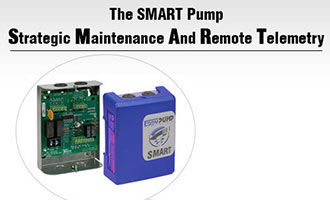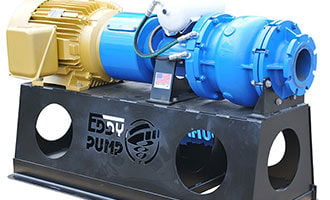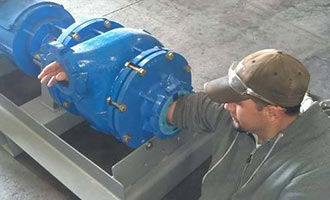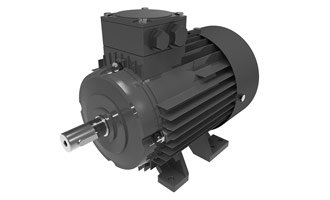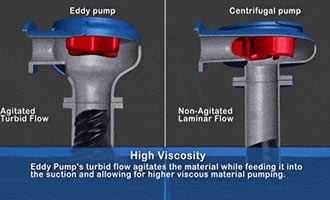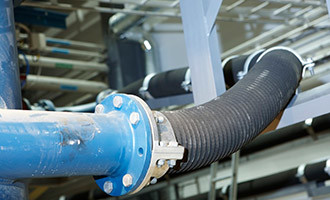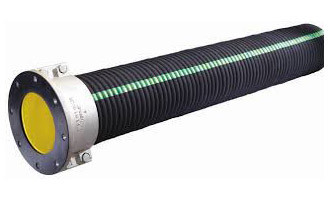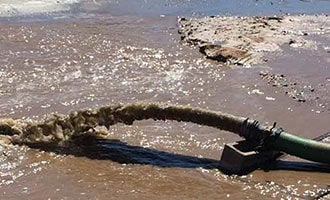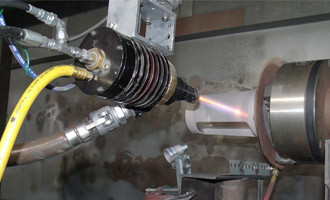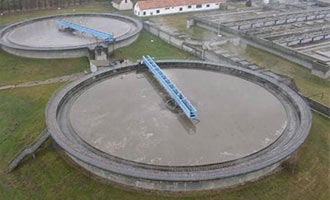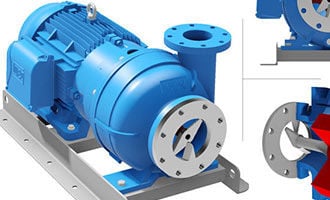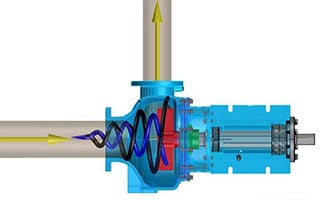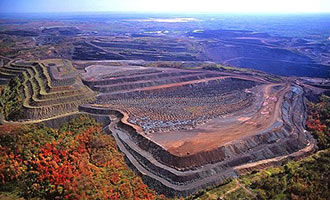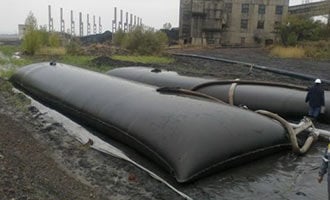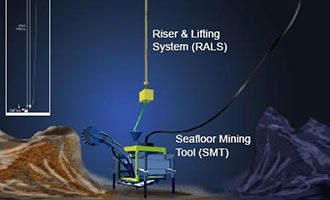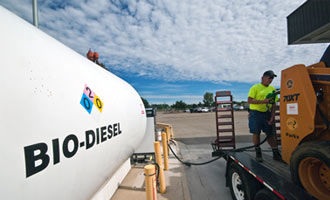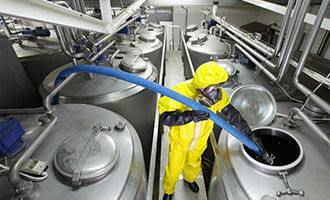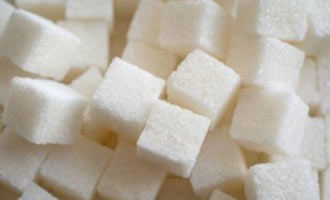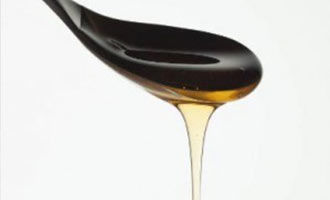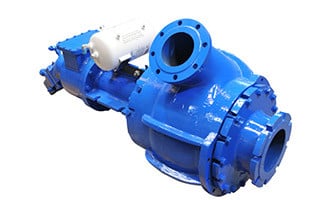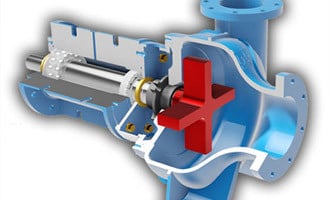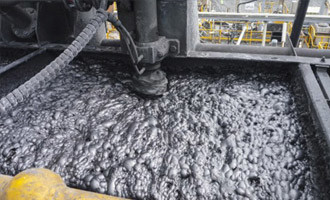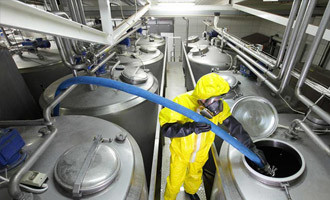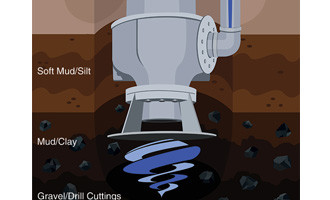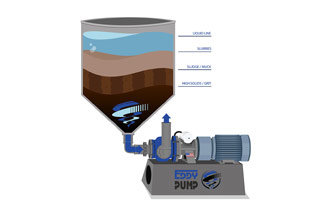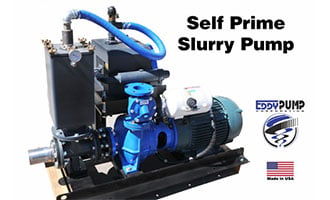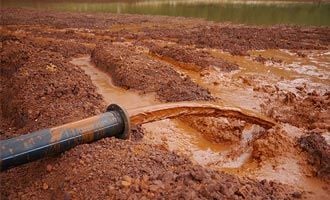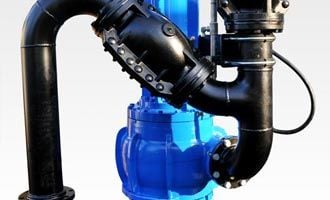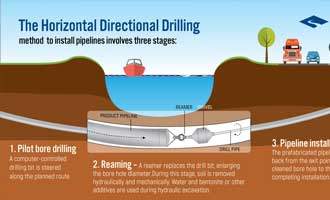MFT Ponds - Mature Fine Tailings - Oil Sands Pumping
Learn How EDDY Pump Equipment can Enhance Oil Sands Projects for MFT Ponds - Mature Fine Tailings Ponds Browse Our Oil Sands PumpsContact Us For a Fast QuoteWhat are MFT (Mature Fine Tailings) Ponds?
MFT Ponds are structures or pits built into the open earth to house mining waste from oil sands, also known as mature fine tailings. These tailings must be periodically cleaned out and removed, however, the tailings are often coarse, abrasive, and full of fine solids which can quickly wear down traditional pumps in a matter of days or weeks. The mine tailings found in quarry lagoons are known to contain contaminated materials that need to be dredged and disposed of properly.
Most oil sands deposits naturally contain a considerable amount (10-30%) of fines, which can be defined as solids and particles with diameters of less than 44 microns. Material of this type is typically composed of clay or silt. Mature Fine Tailings Ponds are often temporary storage solutions that must be reclaimed and pumped out for disposal when the project is finished. However, the problem lies in the fact that these abrasive fines can wreak havoc on unsuitable pumps when the time comes to transfer or remove the tailings.
The fines are suspended in the tailings pond water and have a penchant of forming a heavy slurry-like material termed fine fluid tailings (FFT). If the FFT is left to be unprocessed for multiple years, the FFT layer of fines will eventually degrade into mature fine tailings (MFT). MFT traps up to 30% water by volume and is very difficult to dewater and can take over 150 years to fully settle out!
MFT Pond Reclaimation
As of 2016, the Alberta government considers all tailings ponds to be temporary storage facilities which must eventually be reclaimed by order of Directive 085. Oil sands operators regularly report the total volume of tailings held in the storage ponds to keep a sound measurement of material. According to Alberta law, all tailings ponds must be fully reclaimed within 10 years once the pond is no longer in use. The end-of-mine-life target for all projects will be the equivalent of five years or less of fluid tailings volume accumulation. Operations are required to achieve a RTR (Ready to Reclaim) state ten years after the end of the mines life.
According to Directive 085: Link to PDF
“Fluid tailings are considered RTR when they have been processed with an accepted technology, placed in their final landscape position, and meet performance criteria. RTR is intended to track treated fluid tailings performance during the operational stage of the deposit to ensure that the deposit can be reclaimed as predicted in the life-of-mine closure plan, in the time predicted.
In order to evaluate whether active treated tailings deposits are on the predicted trajectory to allow them to be removed from the fluid tailing inventory, they must achieve approved performance criteria. Each treated tailings deposit will have approved indicators that must be measured to determine if the performance criteria has been achieved.”
Seepage Control
To prevent seepage of hydrocarbons and other environmentally harmful material from entering the ground beneath the tailings ponds, engineers devised ways to combat this from happening. One of the most common methods is to line the tailings pond with a thick clay liner topped with compacted sand. The extremely low permeability of clay prevents contaminants from entering earthen ground.
Additionally, vertical pumping wells are constructed around the sides of the tailings dam. These wells are used to control and keep track of the groundwater and any other seepage that occurs underneath the dam. All seepage water and contaminated perimeter water (from rain or melting snow) is typically pumped back into the process.
Animation of how the EDDY Pump outperforms centrifugal pumps when it comes to pumping high viscosity fluids.
How to Determine the Right Equipment Setup for MFT Ponds
First, you should try to determine the viscosity of the material you need to pump. The best way to accomplish this is to use a device called a viscometer. However, viscometers only measure viscosity under a single flow condition. For liquids with viscosities that can vary depending on flow, an instrument called a rheometer is used. Therefore, rheometer can be considered as a special type of viscometer.
Basically, these devices work by either moving them through a stationary fluid or by keeping the device stationary and running fluid past it. The drag caused by the relative motion of the fluid and a surface is a measure of the overall viscosity. Knowing the viscosity of the material to be pumped will greatly help in the overall pump selection process.
The EDDY Pump makes a great choice for pumping highly viscous material. The EDDY Pump’s geometric rotor acts as a mixer on thixotropic materials and provides a shear thinning effect enabling the pump to move high viscosity liquids much more efficiently than other pumps. The EDDY Pump’s ability to pump concentrated solids is perfect for moving viscous materials with less than 5% free liquid; an impossible task for traditional centrifugal pumps.
EDDY Pump partnered with UAT Pacific and is now able to offer a complete dredging solution for effective slurry, sludge, and solids removal, the Dredge Sled. With the latest technology, the Dredge Sled is a cost-effective solution for your pond, lagoon, canal, tailings pond, and settling tank cleaning.
The Dredge Sled is a simple, efficient and easy to use alternative to more complicated heavy-duty dredging equipment. The best solution for shallow pond or lagoon dredging.
Excavator Dredge Pump Attachment
The EDDY Pump Excavator Dredge Pump Attachment is one of our most popular units. With an optional liner-safe wheel addon, you can be assured your clay or poly liner will remain completely protected while the EDDY Pump does the tough job of pumping the abrasive tailings at the bottom of the pond.
The EDDY Excavator Dredge Pump Attachment allows any power generation or construction company with little or no experience in dredging to easily convert one of their existing excavators or a rental into a complete, mobile hydraulic dredge. An excavator operator can then easily learn to operate the Excavator Pump Attachment with only a few hours of training. The Excavator Pump gets pinned to the end of the excavator boom and in addition to the liner-safe wheel, can either be used with a cutterhead or a high-pressure jetting ring to agitate the material before pumping, allowing for pumping of even more solids and less water.
Operation and setup is simple. A slurry hose is connected to the pump and then run along the boom of the excavator on over to the back of the excavator and connected into the main pipeline. The pump can easily move material at rates of up to 400 cubic yards over distances of over a mile at solids rates of 40-70%. This is all done creating little to no contaminant re-suspension or detectable turbidity. EDDY Pump is proud to product the most environmentally friendly dredge on the market.
Self-Priming Pump
Most EDDY Pumps are submersible, with a self-priming unit, the pump and power unit are not submerged. The suction house goes into the slurry and the unit acts like a super-sized wet/dry vacuum. This type of pump can remove air on its own and continue operation without assistance, making it perfect for mounting on a trailer that can be wheeled from location to location. Because the pump is not submerged, both the operation and maintenance of self-priming pumps are economical and relatively easy.
Autonomous Dredge
For large containment ponds and lagoons which need continuous dredging, the EDDY Pump Autonomous Dredge is a great solution that minimizes manpower and can run 24/7 fully automated or from a remote control room. This is a floating unit that is automated to run continuously without an operator. The pump is deployed from floats and can be powered by an electric or hydraulic power system.
MFT Pond Cross-section
Order or Get Selection Help
Let our sales or engineering support help in your slurry pump and dredge equipment selection. Call (619) 258-7020
Related Products
HD (Heavy Duty) Slurry Pumps
Why EDDY Pumps Are Better – Highlights
This video shows how EDDY Pump outperforms centrifugal pumps when pumping high solids abrasive, viscous or corrosive slurries.
Why EDDY Pumps Are Better - Highlights
This video shows how EDDY Pump transports high slurry and abrasive materials. Featured dredge pump equipment includes the Remote Operated Subdredge, Diver Operated Pump and a Excavator Attachment Dredge Pump.



